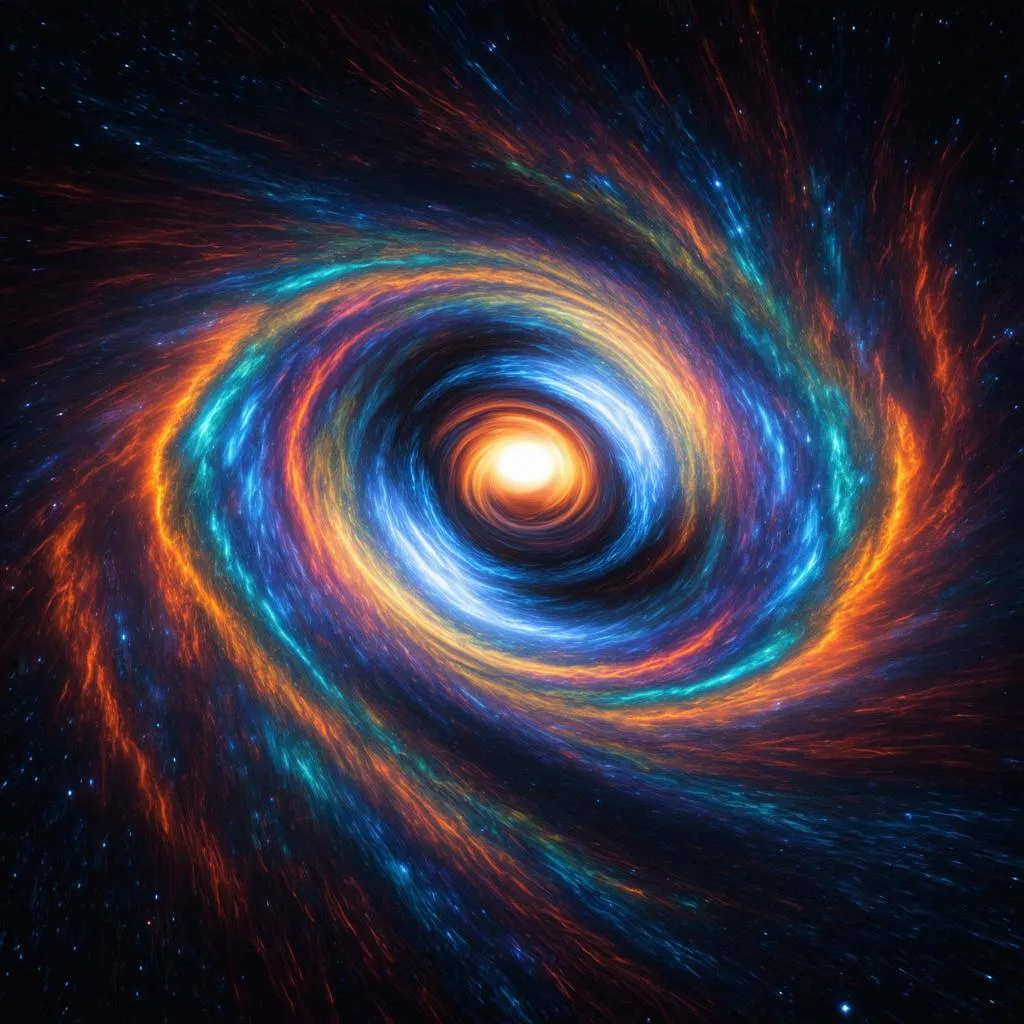Have you ever gazed at the stars and wondered, “What if I could just hop in a spaceship and reach them instantly?” We all yearn for that instant teleportation, especially when planning a trip to a far-off destination like the bustling streets of Tokyo or the serene landscapes of New Zealand. But the universe, it seems, has other plans. The speed of light, a mind-boggling 299,792,458 meters per second, acts as a cosmic speed limit, and breaking it, at least according to our current understanding of physics, is a no-go.
The Unbreakable Cosmic Speed Limit: Einstein’s Legacy
The reason for this limitation lies in the very fabric of our universe – spacetime. Albert Einstein, in his groundbreaking theory of relativity, revealed that space and time are not separate entities but are interwoven into a four-dimensional fabric. Imagine spacetime as a giant trampoline. Massive objects like stars and planets create “dips” in this fabric, which we perceive as gravity.
Now, imagine a tiny marble rolling on this trampoline. That marble represents light, always traveling at a constant speed. Even when passing near a “dip” (a massive object), the marble’s speed remains constant, but its path curves.
Einstein’s equations show that as an object with mass approaches the speed of light, its mass increases infinitely. This means that an infinite amount of energy would be required to propel it to the speed of light, which is simply impossible.
Beyond the Speed Limit: Exploring the Possibilities
While exceeding the speed of light might seem like pure science fiction, physicists are exploring fascinating concepts that could offer glimpses into faster-than-light travel:
- Wormholes: Imagine folding that spacetime trampoline in half so two distant points touch. A wormhole, theoretically, could act as a shortcut through spacetime, connecting two vastly separated locations.
- Warp Drive: This concept involves compressing spacetime in front of a spaceship and expanding it behind, allowing the craft to ride a “wave” through spacetime, potentially exceeding the speed of light.
However, both wormholes and warp drives remain highly speculative and require exotic forms of matter with negative mass-energy density, something we haven’t encountered in the real world.
 Wormhole Travel
Wormhole Travel
The Impact on Our Travel Dreams (For Now)
So, what does this mean for our wanderlust? While the idea of interstellar vacations might seem like a distant dream, the speed of light does impose some constraints on our cosmic aspirations:
- Interstellar Distances: The vast distances between stars mean that even traveling at the speed of light, reaching our nearest stellar neighbor, Proxima Centauri, would still take over four years.
- Time Dilation: Einstein’s theory of relativity also predicts time dilation, meaning time slows down for objects traveling at relativistic speeds. So, while a journey at near-light speed might seem short for the traveler, years or even centuries could pass on Earth.
Embracing the Journey: Finding Travel Inspiration Closer to Home
While we might not be zipping across galaxies anytime soon, remember that our own planet is filled with breathtaking destinations and enriching cultural experiences. Instead of yearning for the impossible, let’s focus on exploring the wonders that surround us:
- Discover the ancient temples of Angkor Wat in Cambodia, where intricate carvings whisper tales of a glorious past.
- Lose yourself in the vibrant culture of Rio de Janeiro, where the rhythm of samba fills the air.
- Embark on a safari adventure in Tanzania, encountering majestic elephants and graceful giraffes in their natural habitat.
 Angkor Wat Temple
Angkor Wat Temple
FAQs About Faster-Than-Light Travel and Our Universe
If nothing can travel faster than light, what about sound?
- Sound is a mechanical wave that requires a medium (like air or water) to travel. Light, however, is an electromagnetic wave that can travel through the vacuum of space. The speed of sound is much slower than the speed of light, and it varies depending on the medium.
Could we ever develop technology to break the speed of light barrier?
- As of now, it seems highly unlikely based on our current understanding of physics. However, scientific exploration constantly pushes boundaries, and who knows what breakthroughs the future holds?
Our Cosmic Journey Continues
While the speed of light might limit our interstellar travel plans for now, it also ignites our imaginations and fuels our desire to explore the universe. At travelcar.edu.vn, we believe that every journey, no matter how near or far, holds the potential for discovery and wonder. So, keep exploring, keep questioning, and never lose your sense of adventure!
Don’t forget to share your own travel dreams and questions in the comments below. Are there any destinations on Earth that make you feel like you’ve stepped into another world? Let us know!